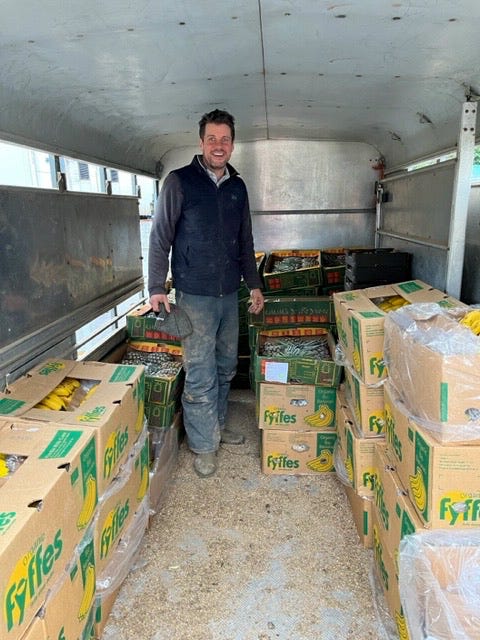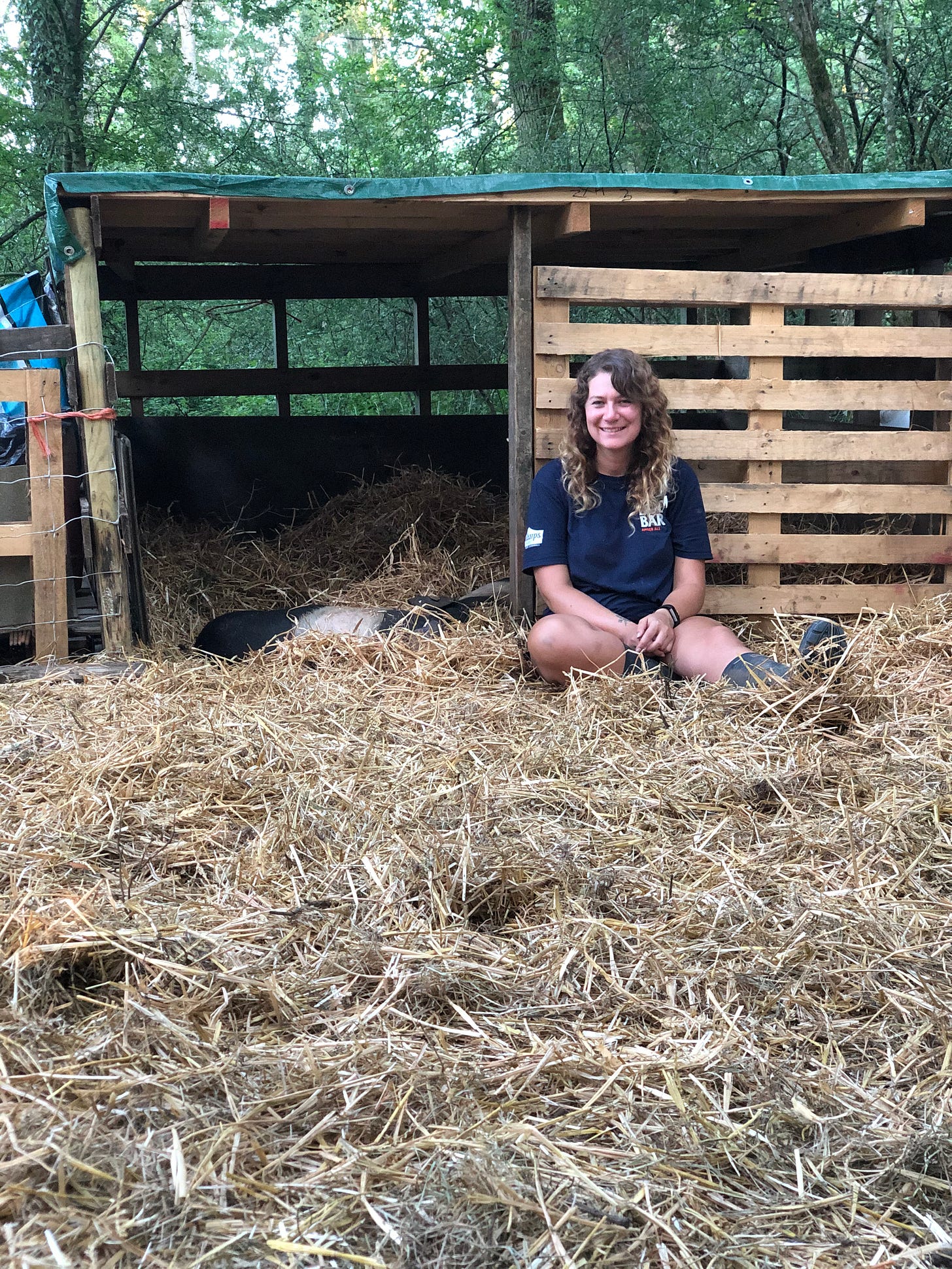Pig Keeping 101
What I Wish I'd Known Before My Pigs Took Over My Life
Raising pigs is a wild, messy, beautiful ride—one that’s reshaped my days with equal parts chaos and joy. At The Woodland Pig Co., we’ve stumbled through rookie mistakes, chased escapees across cricket pitches, and somehow come out the other side with incredible pork and a deeper tie to the land. If I could rewind to 2020 and hand myself one thing before those first 12 weaners arrived, it wouldn’t be sturdier fencing (though, heavens, that’d have helped) or a slick business plan—it’d be this: a no-nonsense guide to what pig keeping really entails. Not just the how-to, but the muddy, honest truth of it.
This isn’t your typical list of dos and don’ts—it’s the lessons I’ve scratched out from three farm moves, countless late nights, and a lot of trial-by-pig. Whether you’re itching to raise your own porkers, dreaming of a smallholding life, or just curious about ethical meat from the ground up, here’s what I wish I’d known before pigs turned my world upside down.
The Dream vs. The Muddy Truth
It starts with a vision: pigs snuffling through woodlands, tails wagging, turning soil into food security one happy grunt at a time. That’s what gripped me in 2020, mid-pandemic, when the world felt shaky and I craved control over what landed on my plate. I pictured self-sufficiency, bacon from my own backyard, a noble little rebellion against industrial food. And sure, I got that—but not without the mess.
Reality hit fast. It’s hauling pallet sheds through tangled woods in sideways rain, patching fences after a sow’s jailbreak, and explaining to baffled cricketers why piglets are tearing up their pitch. It’s hard graft, yes, but it’s also a quiet pride—watching those animals thrive, knowing every bite you raise carries a story. We began with nothing but dense trees and a passion for high-welfare farming, and each misstep taught us how pigs don’t just live on your land—they reshape it, and you, in return.
1. Picking Your Pig Pals: Breeds That Fit
Pigs aren’t one-size-fits-all. The right breed can make or break your setup—matching their quirks to your land and goals is half the battle. Here’s my rundown of UK rare breeds:
Large Black: Tough, docile, born to forage—perfect for pasture or woods.
British Lop: Laid-back and versatile, happy indoors or out.
Gloucestershire Old Spots: The “Orchard Pig”—smart, hardy, loves a good rummage.
British Saddleback: Our crew—adaptable, stellar moms, and pork so rich it’s ruined me for store-bought. Downside? Thick back fat (30mm!)—gold for charcuterie, less so for lean chops.
Oxford Sandy & Black: Ace foragers, but tricky moms—watch those piglets.
Berkshire: Meat royalty—juicy, marbled, needs shade outdoors.
British Landrace: The jack-of-all-trades, solid for any system.
We bet on Saddlebacks for their grit and flavour. They’ve danced through woodlands and pastures with us, delivering pork that’s worth every muddy wrestle.
2. Fencing: Taming the Houdinis
Pigs are escape artists—curious, stubborn, and strong enough to test any boundary. Get this wrong, and you’re in for chaos. Here’s what works:
Stock Fencing: Rock-solid for permanent pens, but a nightmare to shift.
Electric Fencing: Our lifeline for rotational grazing—two strands (nose and shoulder height) at 3,500-7,000 volts keep them honest. Weeds or mud can kill the zap, so check it daily.
Then came the Great Cricket Pitch Escape. One of our sows led her piglets out of their pen and onto the village cricket green. Cue a full-scale pig chase! The locals found it hilarious; we found it less so. Lesson learned? Once a pig escapes, they’ll keep trying—so secure those fences properly from the start.
📖 Read about it in the Basingstoke Gazette
3. Shelters: Practical, Cost-Effective & Traditional
We learned the hard way that cheap isn’t always better. Our first pallet-built pig sheds were cheap but a nightmare to move. Metal pig arcs are sturdy, well-ventilated, and built for purpose. My top tip? Buy them second-hand—they’re cheaper, and pigs will beat them up anyway!
4. Feeding Right: Beyond the Scrap Myth
Think pigs eat anything? Not legally. UK rules nix kitchen scraps to dodge disease—even your carrot peels are off-limits. Here’s how we feed ours:
Store-Bought Feed: Balanced, gets the job done. But sadly soy-heavy!
Local Waste: We teamed with a veg box supplier for unsellable produce—fresh, legal, and cheap.
Brewer’s Grains: Fermented, they’re a gut-health goldmine. We cut costs and boosted growth, though storage is a beast—spoilage stinks.
Lately, we’ve milled our own feed with local grains—fewer food miles, full control. I’ll dive deep into creating our home-grown feed in my e-book. Rule of thumb for feeding: 1lb per month of age, maxing at 6lb daily by six months.

5. The Slaughter Day Test
This is where the dream guts you. Loading pigs for their final ride—after months of care—hits hard. Keep it humane:
Transport: Short trips, calm handling—stress taints meat.
Abattoir: Small-scale spots are rare—hunt early.
Butchery: We cycled through four before landing a pro who nailed our cuts.
Selling the pork? Share the journey. Our online shop sold out fast, but farmers’ markets stole the show—folks loved meeting the face behind the meat.
6. Counting the Cost
Pigs aren’t cheap. Feed and fencing dominate, with abattoir and butcher fees close behind. Supermarket pork undercuts us for a reason—low welfare, high scale. Ours? Higher cost, higher care, higher price—and buyers pay it gladly but you need to tell the story behind it.
7. My Hard-Won Advice
Start small—two pigs teach plenty.
Lean on real farmers—Google’s half the story.
Put welfare first—happy pigs pay off.
Brace yourself—it’s not a hobby, it’s a life.
Hungry for More?
This is just the tip of the pigpen. I’m mulling an eBook—Pig Keeping Unfiltered—packed with breed breakdowns, fencing plans, how to mill your own feed, small scale to commercial contracts and turning pork into profit. It’d be everything I’ve learned, minus the mud in your boots. Would you read it? Drop a comment—I’d love to know!







